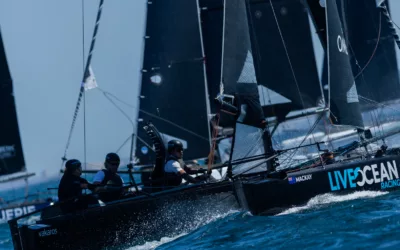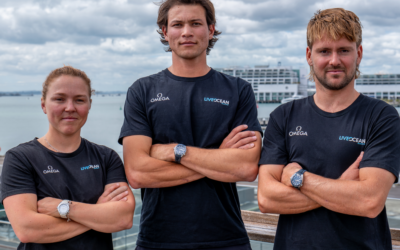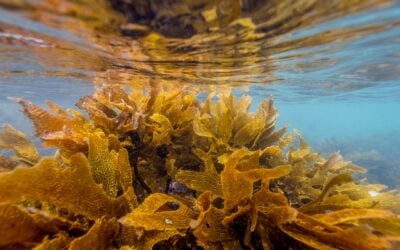Live Ocean checks in with Dr Emma Carroll on the latest updates in her tohorā southern right whale research.
The 2009 pilot study was a first glimpse of where today’s southern right whale go to feed in summer – and it shows a startling change from the whaling era. With only 2 of probably 2,000 tohorā tracked offshore, we needed more information to understand how often the new and old feeding grounds are used. Live Ocean is helping to fund this important research being done by the University of Auckland.
What story has the tagging data been telling us so far in the movements of tohorā?
The preliminary data from the 2020 and 2021 field seasons shows that in the spring, most of the tagged tohorā moved northwest to forage in an area south of Australia, highlighting how important this region is to tohorā. However, one interesting finding is how close some of the southern right whales travel to each other while migrating, at times they are only tens of kms apart – that’s shouting distance for a tohorā.
The southern right whale’s movements into the summer months keep surprising us. The whales that had long-lasting tags, transmitting into the summer of 2021, went far to the west, with Bill/Wiremu then tracking south and swimming along the Antarctic coast. In contrast, this summer the two tohorā with tags transmitting have gone east. In fact, Tekau mā rua has travelled about 2200 km east of the Auckland Islands and is now circling back towards mainland Aotearoa. This tohorā seems to be visiting near to those regions that were historically important whaling grounds. So, with just Bill/Wiremu and Tekau mā rua, we have the first links to both Antarctica and to this historically important region east of Aotearoa in the last 150 years.
How many tags are still active?
As of today, Tekau mā rua’s tag has been going for an amazing 221 days. Waru’s tag was also transmitting until last week, giving 223 days of data.
How is the Aotearoa southern right whale (SRW) population doing in comparison to other SRW species?
The data we have collected over the past two years will be used to give an update on how big the population is today and how fast it’s growing. While I can’t yet give you an answer on that, we have positive signs. For example, the proportion of groups we saw with a calf over the 2020 and 2021 seasons was 50%; in the 1990s the proportion was 25%. We think that this is a sign that the population is growing as there are more females breeding, and it’s consistent with our previous estimate that the population was doubling about every decade.
How is the changing climate affecting tohorā? Do changes in weather such as this year’s La Niña affect the whale’s movements and feeding opportunities?
That’s a really good question and one that we don’t know the answer to yet. The fact that the two whales still transmitting into summer went east instead of west could just be because that’s what those whales like to do, or it could be because of changes in the oceanographic conditions. Watch this space for future work.
Are there any other important research findings that the tagging project has unearthed?
We have collected skin samples from the whales, to genetically identify them and their family, which is the basis of how we will estimate their rate of recovery. However, these skin samples have also been analysed for microchemical markers that reflect where and on what the whales are feeding. We’ve found there are year to year differences in these microchemical markers, which might represent small variations in the location of where the whales are feeding. We are aiming to see if these variations can be linked to changes in oceanographic processes in future.
These microchemical markers are also influenced by the biology of the whale. In fact, it seems that we might be able to tell which females are pregnant or nursing their calf based on particular combinations of these microchemical markers.
I still find it exciting and amazing how much we can learn about their lives, and how climate change could be shaping how they live their lives, from this small bit of skin that takes us, on average, six minutes with each whale to collect.
What is in the pipeline for your upcoming tohorā research?
Using the satellite tag data collected over the past two years, we will compare the movements of the tohorā to the marine protected areas in southern Aotearoa. The whales move more between Murihiku / Southland, Rakiura / Stewart Island and the sub-antarctic Maungahuka / Auckland Islands and Motu Ihupuku / Campbell Island than we suspected, so understanding how much time they spend in protected waters is important to ensure they’re safe while visiting the waters of Aotearoa.



